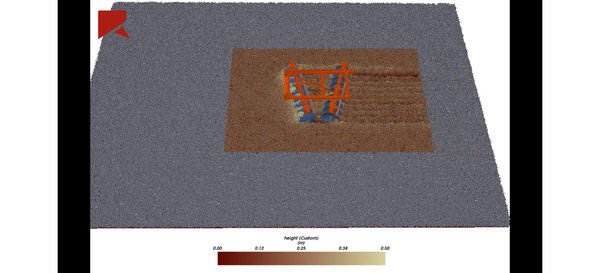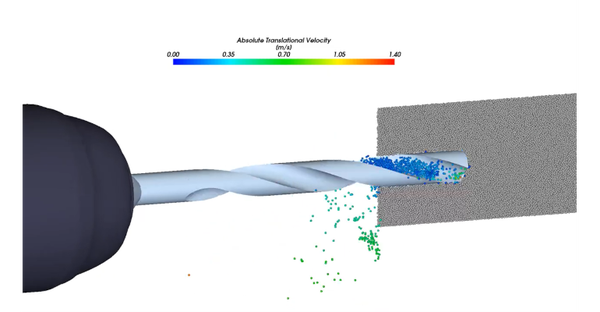ESSS Releases New Particle Dynamics Modeling Software
Release enables faster, easier, and accurate particle dynamics simulations with larger numbers of particles
April 6, 2022

ESSS announces the release of its Rocky 2022R1 top-tier particle dynamics modeling software.
This release enables faster, easier, and accurate particle dynamics simulations with larger numbers of particles, while offering tighter integration with other physics. Engineers will have access to a science-based, easy-to-use material calibration platform, plus the ability to accelerate simulation as much as 10x by using a multi-zone dynamic domain. Particle-laden free surface flows can be simulated using a new multi-CPU and a multi-GPU SPH-DEM coupled solver.
“The release of Rocky 2022R1 is another installment of delivering our vision to solve all types of engineering problems involving discrete solids, with the solution timeframe, capabilities and usability required by engineers”, said Clovis Maliska Jr, ESSS CEO. “In this release, we also expanded our ability to model and solve applications of particles of any shape using the new particle assembly, which makes Rocky capable of modeling engineering problems specific to manufacturing, offering solutions that were not possible even a few years ago.”
The 2022R1 material wizard dovetails into Rocky’s calibration suite and is designed to jump-start Rocky simulations by turning real-world material information into ready-to-use setup parameters. The wizard compares experimental data with a built-in material database and uses AI/ML techniques to provide the best required material-related simulation parameters. The wizard is fully customizable and configurable to individual applications or groups of materials and can be downloaded directly from Rocky’s customer portal.
The multi-zone dynamic domain enables faster simulation, making it possible to simulate applications with several millions of particles by both reducing memory requirements and speeding computational time. This simulation optimization methodology enables dynamic calculation zones of interest to include or minimize contact detection inside or outside of the zones, based on where the particles are active. For example, the simulation of disk harrow equipment (shown below) was accelerated by 9x using the new dynamic simulation domain capability.

In response to a growing demand to model complex particle shapes in applications beyond traditional DEM, especially in manufacturing, the current Rocky release enables assembling of different particles to form new shapes. The particle assembly model improves computational performance for complex concave shape particles and enables simulation of limitless discrete particle shapes.

Another relevant capability in the 2022R1 release is the introduction of a bond model that extends Rocky’s advantage in modeling particle breakage. This new model simulates the behavior of material represented as a collection of bonded particles of any shape. In cases where the material can be characterized, the model predicts the material response to an applied dynamic force.

The bonded material can be particles of any shape and can break due to tensile or shear stresses.
Rocky is launching the beta version of its native SPH-DEM solver kernel with a focus on particle-laden free surface flows. The solver is developed native to multi-GPUs and multi-CPUs. The SPH-DEM coupling offers an effective simulation approach for slurry flows, for example. The solution methodology efficiently accounts for the presence of different sized and shaped particles as well as fluid-particle interaction.

“Weir Minerals is continuously pursuing accurate modeling of motion and breakage of ore particles within SAG mills. The new coupled DEM-SPH model available in Rocky DEM is a great step towards measuring the discharge of the mill by accurately modeling the breakage of coarse material and the transport of the finer material within the grinding and pulp chambers,” said Dr. Nirmal Weerasekara, principal engineer, Weir Minerals.
The 2022R1 release extends Rocky’s applications of Ansys CFD coupling that involve particle size changes due to mass and heat transfer (conduction, convection, and radiation) with or without chemical reactions. The effect of particle size changes can be used in particle drying, particle gasification, and pyrolysis. For transient calculations, CFD and DEM are coupled in multiple ways, including the new one-way transient developed to accelerate simulation with moving geometries, such as pumps and stirred tanks.
Watch videos of the Rocky 2022R1
Engineering Simulation and Scientific Software (ESSS), Florianópolis/SC, Brazil +55 (48) 3953-0000 www.esss.co
About the Author(s)
You May Also Like




